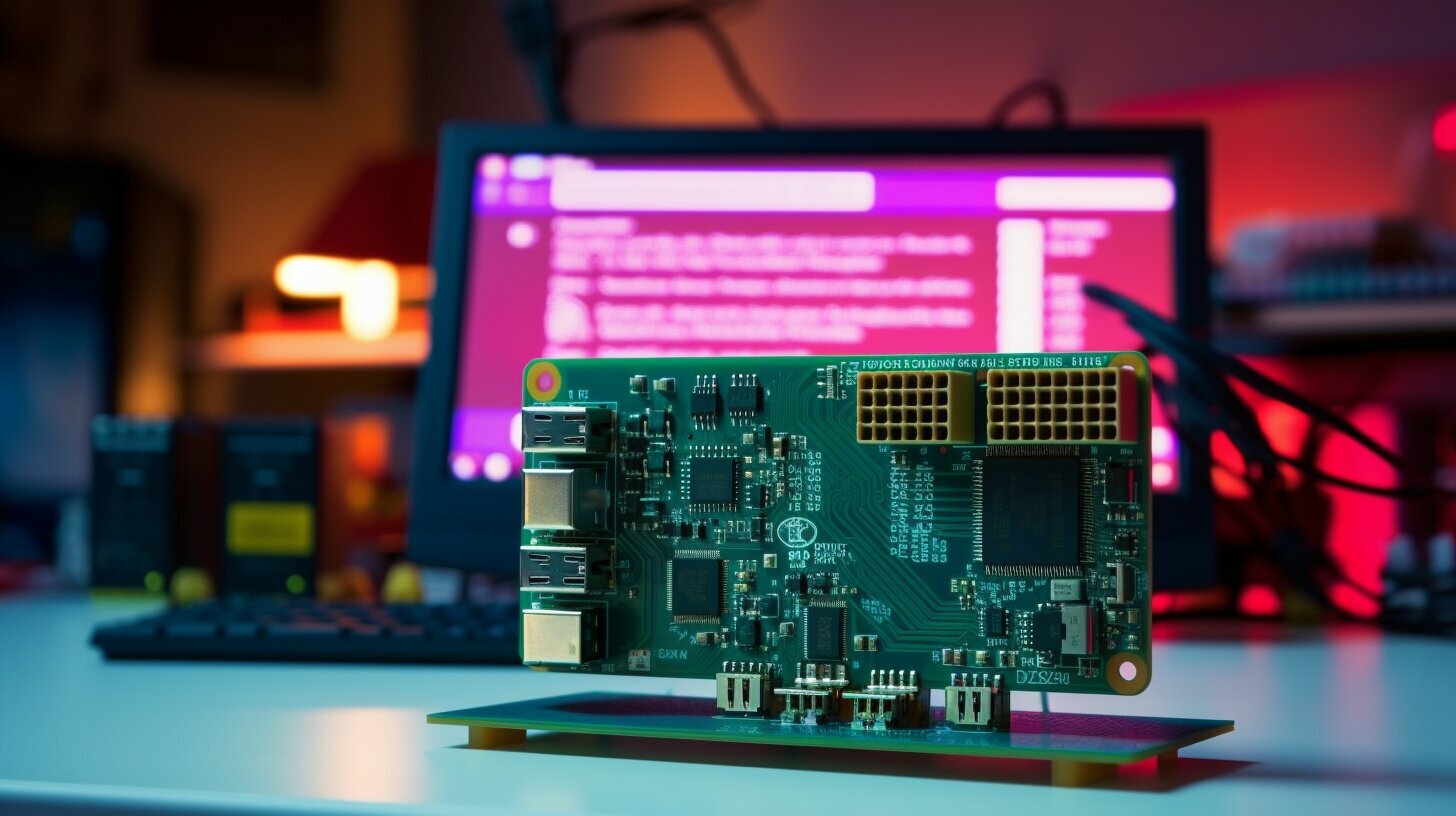Step-by-Step Guide: How to Log In as Root on a Raspberry Pi
By default, the root user is disabled on Raspberry Pi OS and most Linux distributions for security reasons. However, it is possible to enable root access by using the “sudo” command and setting a new password for the root account. This article will provide a step-by-step guide on how to log in as root on a Raspberry Pi and gain superuser privileges. It will also explain why root access is disabled by default and the alternative method of using “sudo” to perform administrative tasks.
Key Takeaways:
- Logging in as root on a Raspberry Pi requires enabling root access through the “sudo” command.
- Root access provides full control over the system, but it should be used with caution.
- The default configuration disables root login for security reasons.
- Granting root privileges to individual users using “sudo” is generally recommended over enabling root login.
- By following best practices and keeping the system secure, you can effectively manage your Raspberry Pi while minimizing risks associated with root access.
Understanding the Root User and Sudo
On Linux operating systems, the root user plays a crucial role as the administrator with full permissions on the system. The root user has unrestricted access to all files, directories, and commands, making it a powerful account. However, due to security concerns, the root user is disabled by default on Raspberry Pi OS and most Linux distributions.
The introduction of the root user and the concept of the “sudo” command was a significant step towards enhancing system security. Rather than enabling the root user for everyday tasks, Linux distributions introduced the use of the “sudo” command to elevate privileges when necessary. The “sudo” command allows regular users to execute specific commands with root-like permissions, reducing the risks associated with unrestricted access.
“With great power comes great responsibility.”
– Uncle Ben
By utilizing the “sudo” command, users can perform administrative tasks without logging in as the root user. This not only enhances system security but also ensures accountability by tracking the actions performed with elevated privileges. The “sudo” command is an essential part of the Linux command line ecosystem and is widely used on the Raspberry Pi.
Linux Basics on the Raspberry Pi
Before delving deeper into the use of the “sudo” command, it is essential to understand the basics of the Linux command line on the Raspberry Pi. The Raspberry Pi is a versatile single-board computer that runs on Linux-based operating systems like Raspberry Pi OS or Raspbian. The command line interface allows users to interact with the Raspberry Pi directly through text-based commands, providing full control and flexibility.
With this fundamental understanding of the root user, the “sudo” command, and the Linux command line, we can now explore how to enable root login on a Raspberry Pi in the next section.
Enabling Root Login on Raspberry Pi
By default, the root user is disabled on Raspberry Pi OS. However, there may be certain scenarios where you need to enable root login temporarily, such as for automated connections or specific tasks. To do this, you can follow the steps outlined below:
- Open the Terminal on your Raspberry Pi or connect to it via SSH.
- Enter the following command to set a password for the root account:
1sudo passwd root
- You will be prompted to enter a new password and confirm it. Make sure to choose a strong password to keep your system secure.
- Once the password is set, you need to modify the SSH server configuration file. Open the file by entering the following command:
1sudo nano /etc/ssh/sshd_config
- Find the line that says ”
1PermitRootLogin
” and change it to ”
1PermitRootLogin yes“.
- Save the changes and exit the text editor.
- Restart the SSH service to apply the new configuration:
1sudo service ssh restart
After completing these steps, you will be able to log in as the root user on your Raspberry Pi using the password you set. It is important to note that enabling root login carries certain security risks, as the root user has full control over the system. Therefore, it is recommended to only enable root login when necessary and to disable it once you have completed the tasks that require root privileges.
Keep in mind that granting administrator privileges to individual users using the “sudo” command is generally the safer and more secure approach. This allows users to perform administrative tasks without exposing the entire system to potential vulnerabilities.
Remember to always exercise caution when using root access or granting privileges to users, and follow best practices to ensure the security of your Raspberry Pi and the data it holds.
Table: Steps to Enable Root Login on Raspberry Pi
| Step | Description |
|---|---|
| Step 1 | Open the Terminal or connect via SSH |
| Step 2 | Set a password for the root account |
| Step 3 | Modify the SSH server configuration file |
| Step 4 | Change the “PermitRootLogin” setting to “yes” |
| Step 5 | Save the changes and exit the text editor |
| Step 6 | Restart the SSH service |
Granting Root Privileges with Sudo
Granting root privileges to individual users through the “sudo” command is a more secure alternative to enabling root login on a Raspberry Pi. By using sudo, you can provide specific users with temporary superuser access, limiting the risk of unauthorized changes or malicious activities. To grant root privileges with sudo, follow the step-by-step instructions below:
- Add the user to the “sudo” group by running the following command in the terminal:
Replace [username] with the actual username of the user you want to grant root privileges to. This command adds the user to the “sudo” group, which has the necessary permissions to use the sudo command.
- Modify the Sudoers file to allow the user to execute commands as root. Open the Sudoers file by running the command:
This command opens the Sudoers file in the default text editor. Look for the line that says “%sudo ALL=(ALL:ALL) ALL” and add a new line below it:
Replace [username] with the actual username of the user. Save the file and exit the text editor.
- The user can now use the sudo command to execute commands as root. To test if it’s working, open a new terminal window and run:
Replace [command] with any command that requires root privileges, such as installing packages or modifying system files. The user will be prompted to enter their password before the command is executed.
By granting root privileges with sudo, you maintain control over who can perform administrative tasks on your Raspberry Pi while minimizing the security risks associated with enabling root login. Remember to only grant root privileges to trusted users and follow best practices to ensure the overall security of your system.
| Advantages of Granting Root Privileges with Sudo | Disadvantages of Enabling Root Login |
|---|---|
|
|
Conclusion
In conclusion, ensuring root access on a Raspberry Pi requires careful consideration of security and best practices. While it is possible to enable root login on the system, it is generally recommended to use the “sudo” command instead. By granting root privileges to individual users when necessary, we can maintain a balance between system control and security.
Logging in as root on a Raspberry Pi should be approached with caution, as the root user has full control over the system and can potentially cause damage if used improperly. By using “sudo” to perform administrative tasks, we can minimize risks associated with root access and keep our Raspberry Pi secure.
Remember to follow best practices such as setting strong passwords, keeping the system up to date, and regularly backing up your data. Additionally, it is important to be mindful of the potential security implications when enabling root access or granting root privileges. By taking these precautions, we can effectively manage our Raspberry Pi while ensuring the security of our root account.
FAQ
Is root access enabled by default on Raspberry Pi?
No, by default, the root user is disabled on Raspberry Pi OS for security reasons.
How can I enable root access on Raspberry Pi?
You can enable root access by using the “sudo” command and setting a new password for the root account. Please note that enabling root access should be done with caution.
Why is root access disabled by default on Raspberry Pi?
Root access is disabled by default to prevent unauthorized system-wide changes and improve security. The use of the “sudo” command is recommended for performing administrative tasks instead.
How can I log in as root on Raspberry Pi?
To log in as root, you can use the “sudo” command and enter your password. This will grant you superuser privileges temporarily.
What are the security implications of enabling root login on Raspberry Pi?
Enabling root login can pose security risks as the root user has full control over the system. It is generally recommended to use the “sudo” command to perform administrative tasks instead of logging in as root.
How can I grant root privileges to a user on Raspberry Pi?
To grant root privileges to a user, you can add them to the “sudo” group and modify the Sudoers file. This allows the user to use the “sudo” command to elevate their privileges when needed.
What are the advantages of using sudo instead of enabling root login?
Using sudo provides a more secure approach to performing administrative tasks. It allows you to grant specific users root privileges without giving them full access as the root user.
- About the Author
- Latest Posts
Mark is a senior content editor at Text-Center.com and has more than 20 years of experience with linux and windows operating systems. He also writes for Biteno.com




